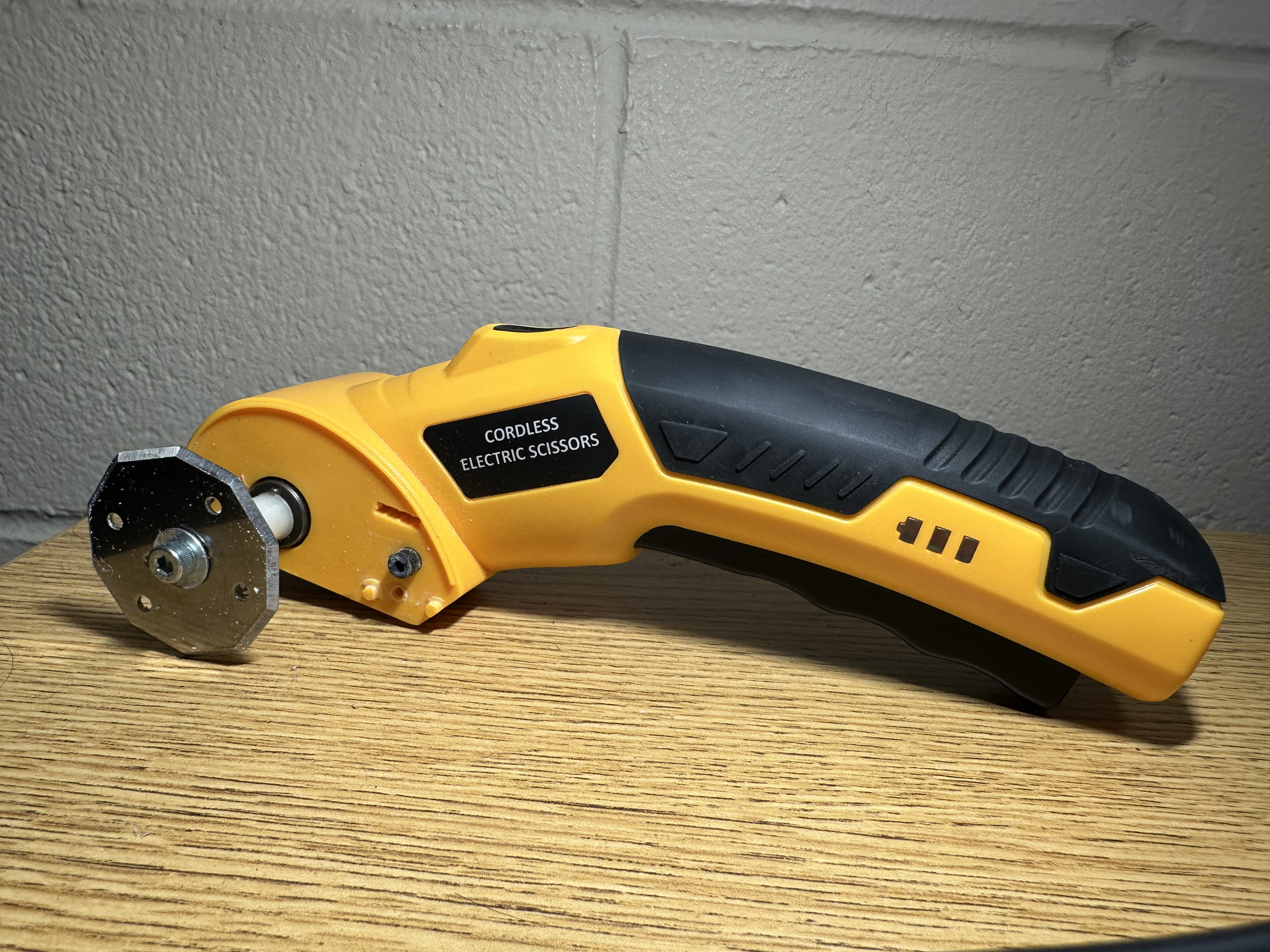DIY Book Debinding: The “Angle Scissor Grinder”
When faced with a shelf of thick, glued-spine textbooks that refused to lay flat on a scanner, I decided to engineer a solution that combined power, creativity, and a mild disregard for OSHA. Thus was born the Light Angle Grinder for Book Debinding a tool built out of equal parts ingenuity and recklessness.
The Problem
Book debinding for scanning is notoriously tedious. Box cutters dull instantly, paper cutters jam on glue, and guillotines cost more than the books themselves. The goal was simple: cut through the spine of a book cleanly and quickly without mangling pages or inhaling half a tree’s worth of paper dust.
The “Engineering”
The base concept came from electric scissors already decent at slicing paper but hopeless against the adhesive and fiberboard spines of modern bindings. The fix? Add torque and edge velocity.
Using a pair of electric scissors as a mounting base, I attached a lightweight angle grinder motor (a compact 12-volt DC model) with a thin cut-off wheel. The scissor trigger was rewired as a soft-start switch, and a small aluminum bracket kept the blade aligned roughly parallel to the scissor path. Safety measures? Minimal. Sparks? Plentiful. Results? Beautiful.
Results and Reflections
The first test sliced through a hardcover spine like butter left on a radiator. Within seconds, the book was neatly liberated into stackable pages ready for scanning. The table, however, was not as fortunate. Neither were a few nearby paperbacks that got caught in the wake.
Despite (or because of) its reckless simplicity, the prototype worked fast, loud, and undeniably effective. It’s the kind of engineering that would horrify a lab supervisor but make a hacker proud.
